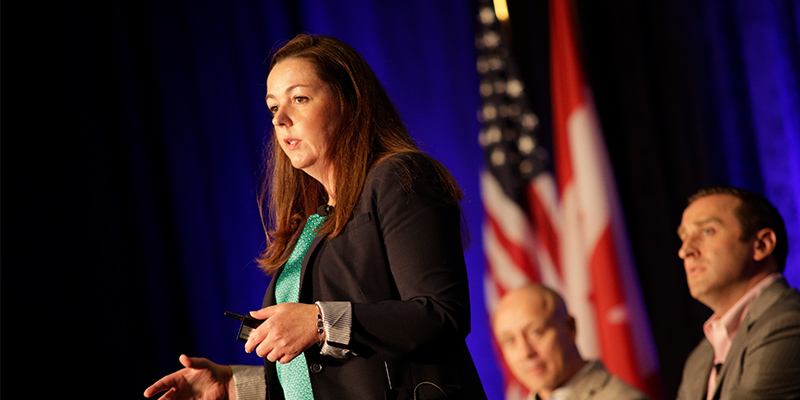Baseball season is winding down, but the season of CRE never ends – and everyone wants to know “what inning” the industry is in. It’s impossible to say for certain where the economy is going. But accurate numbers can help provide a better picture. At the FlexOffice 2018 conference, hosted by NAIOP and the Global Workspace Association, experts in analytics took a look at the future of shared workspaces.
Scott Homa, senior vice president and director of U.S. office research at JLL, predicted strong growth in the take-up of flexible space. Just this year in New York City, he said, a third of the space taken up is flexible space instead of traditional space. He added that there’s been a 23 percent annual growth in flexible space since 2010. In that same time frame, there was just one percent growth in traditional space. And big corporations haven’t really moved into the arena yet. More than 80 percent of Fortune 500 companies say they expect to use more shared space in the years ahead, and that could drive explosive growth.
Homa expects strong demand across the board: from freelancers, small companies and large companies alike. “We’re probably in the third or fourth inning with freelancers,” he said, “but with big corporations, only in the top of the first.” He said JLL is big on the shared space model and predicts a bright future.
For her part, Michelle Bodick, managing director for Sales and Marketing (Americas) at The Instant Group has been tracking “flexible markets” for two decades. That includes coworking environments and managed offices.
Her company forecasts worldwide growth of 15 percent per year going forward. She said that in the U.S., flexible offices have increased 10 percent in the last year. She said that trend is likely to continue. “People want to invest in their core businesses, not in their real estate,” she noted. That will drive more companies into shared space instead of traditional long-term rentals.
Bodick also sees plenty of growth potential for smaller providers to break into the field, which she expects to grow. “Industry demand remains strong,” for flexible space, she said. In fact, many tenants are signing longer leases for flexible space. “We have seen a steady growth in the number of 18-months leases,” she added.
“I think there is a massive opportunity in this market,” she said. She doesn’t doubt that this market is in the early innings.
Kane Willmott, CEO, iQ Office Suites, asked the experts how operators can protect against potential downturns. “If you operate facilities in multiple locations in multiple markets, you’ll be better prepared for a downturn,” Homa said. He also advises forming a true partnership between owners and tenants. “An inviting environment drives engagement and makes the model a lot more resilient,” he said, taking care to note JLL doesn’t expect a downturn any time soon.
Bodick advised owners to do plenty of research and build exactly what customers want in their market.
Homa noted that the flexible workspace business is very transparent. Data are widely available, he said, and that helps owners know what customers want. It should also help investors project a downturn, if one arrives. While forecasting is difficult, neither of these experts expect a downswing in the years ahead. They expect the game to have a good run for many innings to come.














